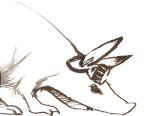Bird Beak Structure and Diet
Students analyze photos of birds from different primary foraging categories to test the hypothesis that morphological adaptations for different food types are consistent within a trophic category and different across trophic categories (e.g., piscivores generally have long, thin beaks, whereas terrestrial mammal predators have squarish beaks). Diet information and beak photos are drawn from the Animal Diversity Web using Quaardvark. Students can use the free image analysis program "Image J" (from the National Institutes of Health) to determine beak size and shape from photos. This activity was developed by Professor Keith Pecor for his Ecology class at The College of New Jersey.






